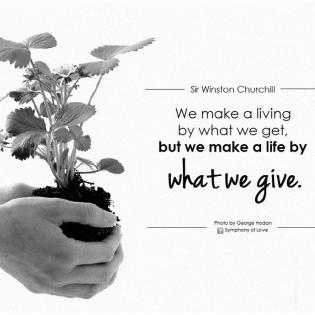PHIL-AN-THROPY Cheer
The youth will
- work collaboratively.
- have fun learning the word “philanthropy.”
- “let off steam” in a workshop.
Large room with chairs arranged in three sections
The facilitator explains that the group will be working together to understand philanthropy and philanthropic actions. Many people don’t like to use the word because of the difficulty in pronouncing it... and understanding it. Now that they are comfortable in saying the word, they can help others become familiar with the word and concept.
Instructions
The facilitator arranges the chairs into three separate groupings with an aisle between each. Participants are instructed to sit in the chairs, spacing themselves among the three groups of chairs.
The facilitator explains that the work they will be doing will be about “philanthropy.” Participants are asked what the word means to them and the facilitator writes the responses on the board. The facilitator explains that the activity they are about to do will help them pronounce the word and become very comfortable saying it. He/she reminds them that in school there are a number of cheers to urge the team on. “We will be using a cheer to help us with this word.”
The facilitator tells the first section of chairs that they are “Phil”; the second set is “An”, and the third “Thropy.” Each section practices its part of the word. At the count of three, the facilitator points to the first section, who stand and shout their part; the second section, who stand and shout their part; and then the third section stands and shouts.
The facilitator or participant leader can mix the sections up: “Thropy,” “Phil,” “An,” etc. Just for fun! After a few minutes, the leader then asks the group to move their chairs together (eliminating the aisles) and at the count of three, shout out the word, “philan¬thropy.” Have the group practice saying the word several times.
Just like the football game cheer, the facilitator might want to include the “wave” as part of the activity. As the participants say their portion of the word, they could stand and move their arms up and down. This version would be especially good after lunch or when the participants are getting tired.
